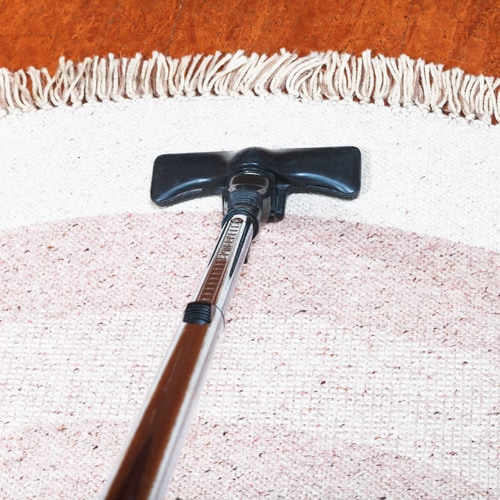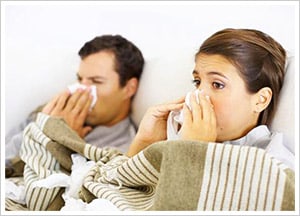 If you often find yourself greeting the morning with a sneeze, it’s quite likely caused by a dust mite allergy. Though you may not realize it, you’re sharing your bed with millions of these tiny creatures each night. And don’t think that moving to the couch will solve anything – they’re keeping you company while you relax in front of the television, too. Fortunately, like with most problems, knowing is half the battle. Let’s take some time to get to know these unpleasant little guys and what you can do to eliminate dust mite problems.
If you often find yourself greeting the morning with a sneeze, it’s quite likely caused by a dust mite allergy. Though you may not realize it, you’re sharing your bed with millions of these tiny creatures each night. And don’t think that moving to the couch will solve anything – they’re keeping you company while you relax in front of the television, too. Fortunately, like with most problems, knowing is half the battle. Let’s take some time to get to know these unpleasant little guys and what you can do to eliminate dust mite problems.
What are dust mites?
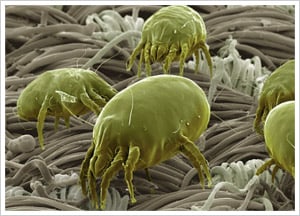
Dust mites live from an average of 15 days (males) to 70 days (females). Dust mites reproduce very quickly and females can lay up to 100 eggs at a time. Even more disturbing is the fact that a single mite will produce nearly 30 fecal particles every single day. That equals 2,100 fecal particles in the female’s ten week lifespan. To put that into perspective, consider this: ten percent of a two-year-old pillow’s weight can be made up of dust mites carcasses and droppings.
Where do dust mites live?
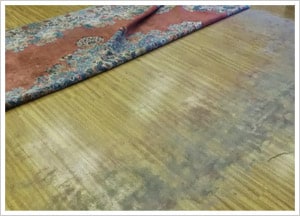
Why do dust mites make me sneeze?
Although they are close relatives of ticks and spiders, (all members of the arachnid class) dust mites don’t feed on blood and they don’t carry diseases. However, that doesn’t mean they aren’t harmful. Dust mites are among the most common triggers of asthma and allergies.
Allergies are an abnormal response of the immune system. Individuals affected by allergies have immune systems that react to a usually harmless substance (such as dust mites or pollen) as if it were a disease causing agent (like a germ or virus). When they inhale or otherwise come into contact with an allergen, their body begins to produce antibodies which trigger a reaction.
The dust mite’s gut (dust mites do not have stomachs) contains a powerful enzyme that it excretes in fecal matter to help break it down into a future meal. The enzyme in the dust mite’s fecal matter is the major allergen. Dead dust mite exoskeletons are a lesser allergen, but still a contributor. So, quite simply, dust mites make you sneeze when your body has an allergic reaction to inhaled particles of dead dust mites and dust mite feces.
Almost half of all Americans have an allergic reaction to dust mites. Even if you’re not allergic, it’s possible to develop an allergy through exposure. This is especially true for children and young adults. Having a family history of allergies may increase the risk s well.
How can I tell if I have a dust mite allergy?

If you exhibit any of these symptoms and suspect that you may have a dust mite allergy, speak to your doctor. He (or she) will ask some specific questions and examine the lining of your nasal passages, which will appear swollen and discolored if you have an allergy to something airborne. Based on conclusions drawn from this brief examination, your doctor may refer you to an allergist who will ask additional detailed questions and perform some allergy tests.
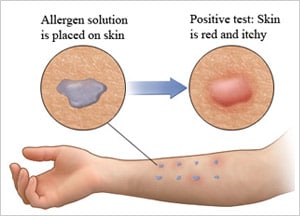
If you are unable to have a skin test for any reason, the allergist may perform a blood test. The blood test checks for antibodies specifically related to allergies, including dust mites. Because of the way this test works, it can also help you understand how sensitive you are to the allergens.
How can I get rid of my dust mite allergy?
The best way to manage allergies is to avoid the triggers as much as possible. In the case of a mite allergy, this means avoiding dust and dust mites. Although it’s impossible to get rid of every single dust mite in your home, you can greatly reduce the number by doing things like removing mite habitats, avoiding accumulation of mites and having your rugs, draperies and furniture cleaned regularly. At Love Your Rug we provide professional rug cleaning services, which eliminate all dust mites and remove all dust and dirt from area rugs. We recommend having your area rugs cleaned at least every 3 months if you have a dust mite allergy. Doing so will help eliminate your dust allergies. Many of our clients tell us that our rug cleaning helped them sleep at night without waking up stuffed and allergic. Our drapery cleaning line Love Your Drapery takes care of removing dust mites, dust and dirt from your draperies. It is also important to have your draperies cleaned four times per year as well if you have dust allergies. We also offer professional furniture cleaning as well, which should be done at least semi annually to prevent allergies. If you still exhibit symptoms even though you get your area rugs, draperies and furniture cleaned regularly, there are several types of allergy medications and other therapeutic treatments available to help minimize the effects.


How can I get rid of my dust mites?



Removing dust mite habitats would mean getting rid of your carpets, rugs, draperies and upholstered furniture as well as any other fabric material in your room. If you don’t like the idea of living in a home that is devoid of these comforts, proper cleaning is essential. Vacuuming your rugs and furniture regularly will remove surface dust, but it isn’t effective for removing dust mite allergens and may even make the problem worse. To keep your home as free from dust mites as possible, use reliable rug cleaning and furniture cleaning services to clean your rugs, carpets and upholstered furniture every three to six months.

